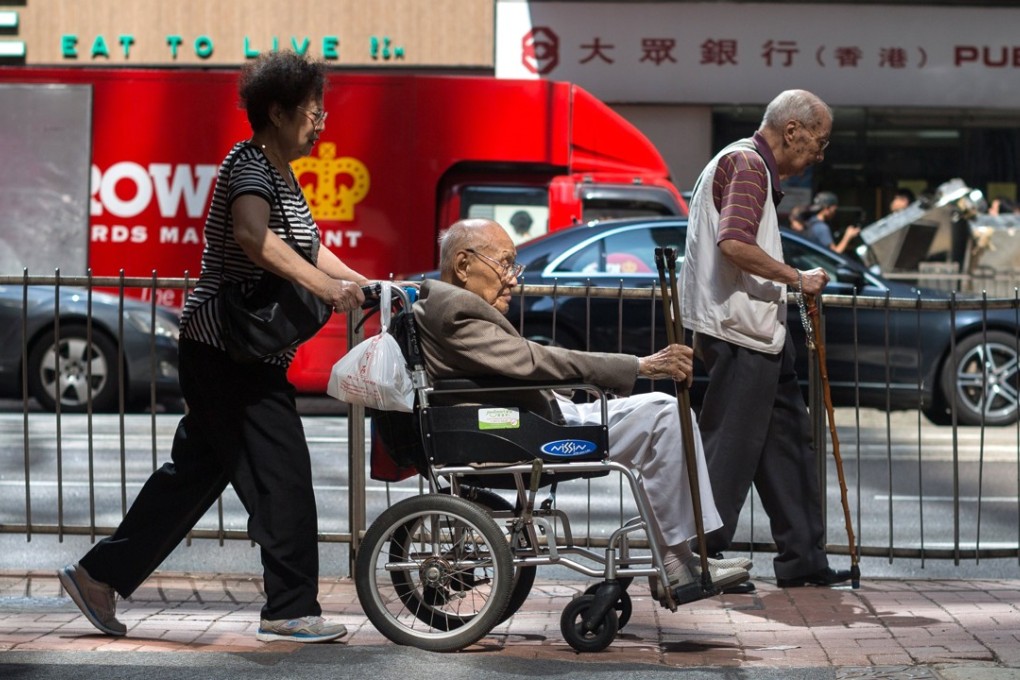Hong Kong faces challenge in how to manage its ageing population
Demand for elderly goods and services will grow as Hong Kong faces a declining labour force, shrinking family size and rising elderly dependency ratio

One of the major challenges for Hong Kong to sustain its global city status is to find ways to manage significant demographic changes in society.
According to “Hong Kong Population Projections 2015-2064”, the number of elderly people, those aged 65 or older, in Hong Kong will reach 2.58 million by 2064, around 35.9 per cent of the population. The work force, those aged 15 to 64, will shrink to 3.92 million, or 54.6 per cent of the population).
In 2014, the elderly dependency ratio was 198, meaning each elderly person was supported by 2.4 of working age. The ratio is projected to jump to 567 by 2064, implying that each elderly person will be supported by 1.8 of working age. The average family size is projected to drop from 3.9 people in 1981 to 2.8 in 2024.
In light of the ageing population, the government established the Elderly Commission as an advisory group for elderly policy in 1997. In 2017, the Commission launched an “Elderly Services Programme Plan” in which the importance of “Ageing-in-place”)was emphasised.
Pok Oi Hospital celebrated its centenary in November 2017 by launching a huge residential care project for the elderly, the Pok Oi Hospital Tuen Mun Lam Tec Residential for the Elderly. This project will provide residential care for more than 1,400 elderly people.
The project requires community-based research bringing social care / social policy experts, Gerontechnology and Socialpreneurship together for research as well as for trained professionals to meet the manpower and research needs of the residential home.
At the same time as Hong Kong faces a declining labour force, shrinking average family size, rising elderly dependency ratio and ageing population, the demand for elderly-related goods and services will keep increasing. This makes management of its rapidly ageing population more complicated.